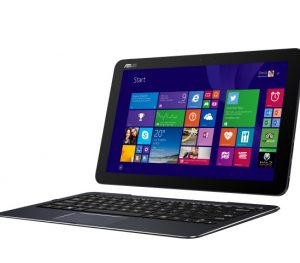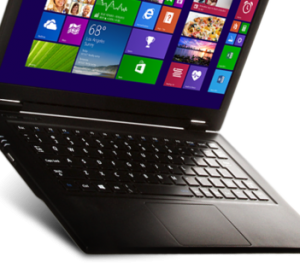Enterprise femtocells are destined to play a larger role as mobile operators look for new ways to improve the smart phone experience inside the enterprise
Some people may yet debate the value of femtocells, but the tide has turned: At the end of 2011, the number of femtocells shipments had reached roughly 2 million units deployed annually, and the market is expected to grow to 12 million units worldwide in 2014.
For the uninitiated, Femtocells are small base stations that operators place in homes or businesses to improve coverage and capacity for users. While there is some debate yet about whether femtocells or Wi-Fi represents a better choice, most experts are now saying that the two technologies will work together.
The timing is right for even more growth of femtocells because many operators are upgrading their networks to LTE, the next generation mobile technology. At the same time they realize that users want to consume an increasing amount of data. Femtocells can help increase capacity for operators but deploying femtocells requires radio frequency planning. It’s easier for operators to plan femtocells into new networks than it is to add them to an existing network.
“On the enterprise level, femtocells can be used by service providers to offer unique, personalized services to their business customers. The technology can facilitate a new breed of mobile service that exploits femtocells’ ability to detect presence, connect and interact with existing networks on the enterprise. Femtocells can, for example, automatically connect your mobile phone to your office network when in that environment, allowing employees to securely access enterprise information, back-up files, stream multimedia content to other devices on the network, and configure a variety of useful location-based updates,” says Leo Xu, VP of Huawei Middle East.
Femtocells can also help operators that are struggling with finding new sites for their base stations, an often expensive exercise. Femtocells are physically much smaller than a base station so can hang in many more kinds of locations.
“In order to prepare networks for surging traffic demand, operators need to improve and densify their existing mobile broadband networks and add small cells in an optimal way. Continuous technology advancement, spectrum growth and densification will lead to major improvements in capacity and performance overall. In order to meet capacity demands at hotspots and at cell edges deploying small, low-power cells that cover less extensive areas can be a more cost efficient solution. Thousands of these cells could potentially be deployed in mobile networks in dense urban areas,” says Turgut Erkul, Director of Mobile Broadband – Middle East, Ericsson.
He adds that in such situations, additional capacity can be provided by deploying small, low-power cells that cover less extensive areas. “Tens of thousands of these cells could potentially be deployed in dense mobile networks in urban areas. Coordinated functioning of these small cells with the macro network is also called Heterogeneous networks.”
The femtocell concept can quickly and easily be applied to small offices, and with some adaptations, can be scaled up to bigger buildings. These ‘enterprise femtocells’ or picocells, represent a clear choice for larger business premises.
Compared to their residential counterparts, enterprise pico and femto cells offer higher power and greater capacity to cover more cellphone users in large and complex enterprise locations, ranging from office suites to multiple floors in large buildings, retail locations, car parks and many types of public spaces.
“From a user’s perspective, both kinds of femtocells are a true plug-and-play solution with minimal installation or technical knowledge required. As they were initially consumer-oriented, femtocells typically supported no more than four active users. However, by improving the chip technology femtocell makers have been able to offer greater access for the enterprise level. Enterprise-grade femtocells can, for example, support up to 16 active users while delivering more expansive geographic coverage than those typically required for the home,” says Xu.
Femtocells used on the enterprise level can also provide more advanced management configurations, as in the case for large enterprises where inter-femto interactions are required to serve upwards of several hundred employees in a single office.
However, Ericsson believes heterogeneous networks comprising a variety of macro cells, picocells and femtocells are the way to go for mobile operators planning for better in-building coverage in future networks.
“The deployment of small cells for indoor sites makes infrastructure and interference issues easier to manage. Heterogeneous networks can also be integrated smoothly with Wi-Fi, which is a more cost effective solution for indoor mobile broadband coverage for enterprise and residential users than femtocells. Femtocells are a costly and complex way of delivering coverage to the relatively small percentage of homes lacking good macro coverage. As they are not fully integrated with the macro network, femtocells that reuse macro carrier frequency can create interference, which affects user experience across the entire network,” says Erkul.
While femtocell technology presents many opportunities for service provider and enterprises alike, one of the main concerns today is whether subscribers themselves are prepared to buy into the technology, according to Xu.
“We currently see two approaches being taken by service providers to address this issue. First, providers choose to bear all access point (AP) costs to retain their mobile customers—which in the long run is cost effective. Alternatively, service providers are also allowing subscribers to rent or buy APs with certain added benefits (usually bundled services). With the price of APs expected to drop as the technology matures, and coupled with increased subscriber awareness, many service providers believe that the costs of this second approach can likely be relieved in the short to medium-term,” he says.
Erkul from Ericsson says the main challenges are to find hot spots, suitable sites and backhaul, how to deploy small cells efficiently, how to achieve target performance levels, how to optimise multi-layer radio performance, and how to maintain small cells at low TCO. “One size does not fit all when it comes to deploying a heterogeneous network. Instead, a flexible approach is needed to maximize capacity, coverage and spectrum efficiency. Increasing coverage and capacity depends on existing radio access and backhaul infrastructure, site availability, radio environment in terms of interference and mobility, availability of radio spectrum and time-to-market considerations.”
The smartphone is now integral to business life. Knowledge workers are familiar with using enterprise applications and accessing email and the Internet from their smartphones when on the move, and they expect the same or better performance inside their offices. Using today’s picocells and enterprise femtocells, carriers can ensure that their business customers achieve that goal.











